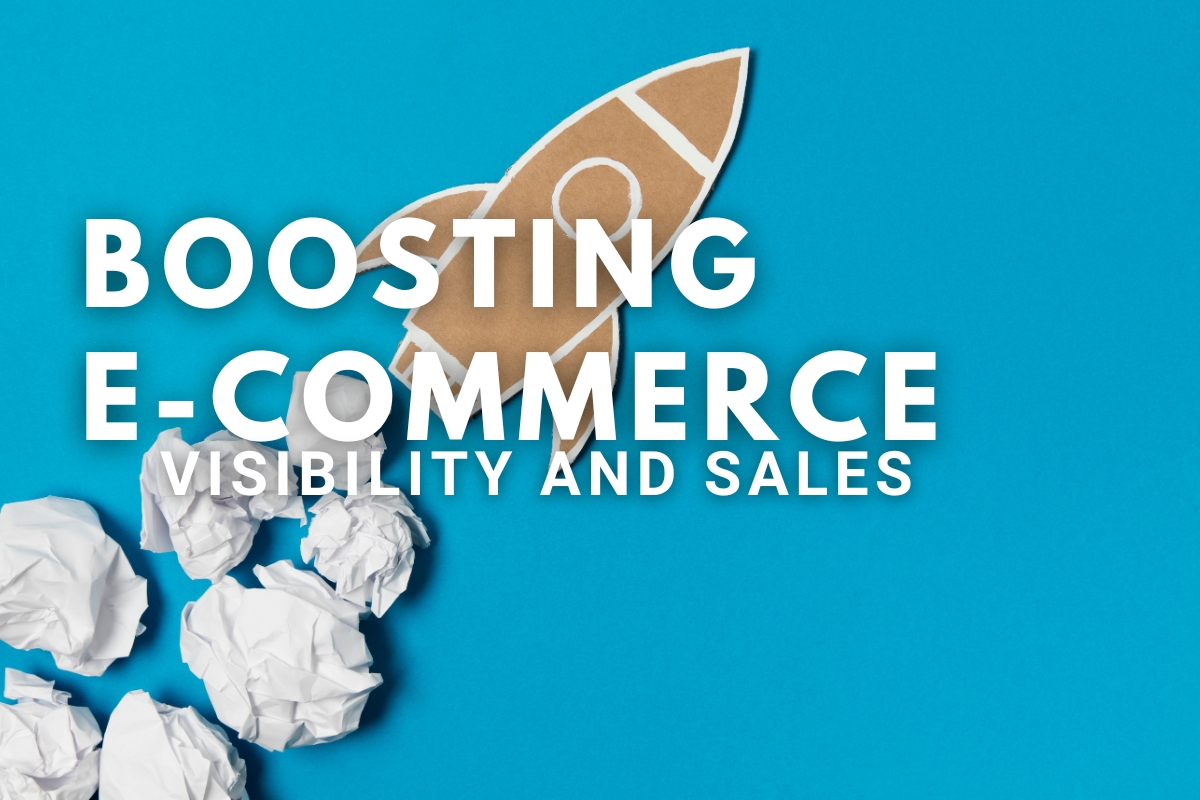In today’s bustling digital marketplace, establishing a robust online presence is vital for e-commerce businesses. It’s not just about having a beautifully designed website or a vast product catalog; it’s about ensuring your potential customers can find you amidst the sea of online options. This is where E-Commerce SEO (Search Engine Optimization) steps in as a game-changer.
SEO isn’t just a buzzword; it’s the key to unlocking higher search engine rankings, driving organic traffic, and ultimately, boosting your sales. In this first part of our exploration into E-Commerce SEO, we’ll get into the foundational strategies that can elevate your online store’s visibility and pave the way for more sales.
Understanding the E-Commerce Market

Before we dive into specific SEO tactics, let’s take a moment to understand the e-commerce market. It’s a dynamic environment where competition is fierce, and consumer behavior constantly evolves. Shoppers today are discerning; they research products, read reviews, and compare prices before making a purchase. To succeed in this environment, your e-commerce store needs to be easily discoverable and trustworthy.
The Power of SEO for E-commerce
SEO is essentially a set of techniques that help your website rank higher in search engine results when potential customers search for products or services you offer. For e-commerce, this means when someone looks for a product you sell, your store should appear near the top of the search results. Why is this important? Because the majority of online shoppers click on one of the top search results, often without scrolling past the first page. If your store isn’t there, you’re missing out on potential sales.
Keyword Research: The Foundation of E-Commerce SEO

At the heart of effective E-Commerce SEO is keyword research. This involves identifying the specific words and phrases potential customers use when searching for products you offer. It’s about understanding their language and intent. For instance, if you sell handmade leather wallets, you’ll want to know if more people search for “genuine leather wallets” or “handcrafted leather billfolds.” Keyword research tools like Google Keyword Planner or SEMrush can help you identify these critical keywords.
Optimizing Your Product Pages

Once you’ve identified your target keywords, it’s time to optimize your product pages. Each product page should be a finely tuned SEO machine. Here’s what you should focus on:
1. Title Tags: Make compelling and descriptive title tags that include your target keywords. For example, “Handmade Leather Wallets: Genuine Billfolds for Men.”
2. Meta Descriptions: Write concise meta descriptions that not only contain keywords but also entice users to click. Make them relevant and engaging.
3. High-Quality Images: Visuals matter. Use high-resolution images of your products. Optimize them by compressing file sizes to improve page load speed.
4. Detailed Product Descriptions: Don’t skimp on product descriptions. Provide comprehensive information about your products, including sizes, materials, features, and benefits.
5. User Reviews and Ratings: Encourage customers to leave reviews and ratings. Not only do they provide valuable social proof, but they also keep your product pages fresh with new content.
Creating Engaging Content
Beyond product pages, consider creating engaging and informative content. Blog posts, guides, and how-to articles related to your products can boost your SEO efforts. For instance, if you sell outdoor camping gear, publishing articles about “10 Essential Tips for a Safe Camping Trip” can attract both traffic and potential customers.
Optimizing for Mobile

With the surge in mobile shopping, it’s crucial to ensure your e-commerce site is mobile-friendly. Google even considers mobile-friendliness as a ranking factor. Responsive design, fast page load times, and an intuitive mobile user experience are essential.
Advanced E-Commerce SEO Tactics for Maximum Sales
Now, we’ll get into more advanced tactics that can propel your online store’s visibility and sales to new heights. As we explore these strategies, remember that SEO is an ongoing process, and staying ahead requires adaptability and constant improvement.

1. Voice Search Optimization
Voice-activated devices like Amazon’s Alexa and Google Assistant have changed the way people search online. Many e-commerce businesses are yet to optimize for voice search. Consider incorporating natural language phrases and long-tail keywords into your content to cater to voice searches effectively.
2. Schema Markup
Schema markup, or structured data, can make your product listings stand out in search results. It provides search engines with additional context about your products, potentially leading to higher click-through rates. Rich snippets, such as star ratings and pricing information, can significantly impact user behavior.
3. Content Marketing and Link Building
While content marketing was briefly touched upon in Part 1, it’s worth emphasizing its importance. Creating valuable, shareable content can attract organic backlinks from authoritative websites. These backlinks are like endorsements that signal your site’s credibility to search engines.
4. Page Speed Optimization
In the era of instant gratification, slow-loading pages can lead to high bounce rates and lost sales. Optimize your website’s performance by compressing images, leveraging browser caching, and minimizing HTTP requests. Google’s PageSpeed Insights can help identify areas for improvement.
5. Secure Your Website with HTTPS
Security is a growing concern for online shoppers. Having an SSL certificate and serving your website over HTTPS not only secures user data but also provides a minor SEO ranking boost. It’s a win-win for your e-commerce site.
6. Monitor and Adapt
Regularly monitor your site’s performance using tools like Google Analytics and Google Search Console. Track your keyword rankings, organic traffic, and conversion rates. Use this data to identify what’s working and what needs improvement. SEO is an iterative process, and staying adaptive is the key to long-term success.
In Conclusion
E-commerce SEO isn’t just about ranking higher on search engines; it’s about providing a seamless shopping experience for your customers. By implementing these strategies, you can enhance your online visibility, attract more potential buyers, and ultimately increase sales for your e-commerce business.
Remember, SEO is a journey, not a destination. Stay informed about the latest trends and algorithms, and be ready to adapt. With a well-rounded SEO strategy, your e-commerce store can thrive in the competitive digital market.

